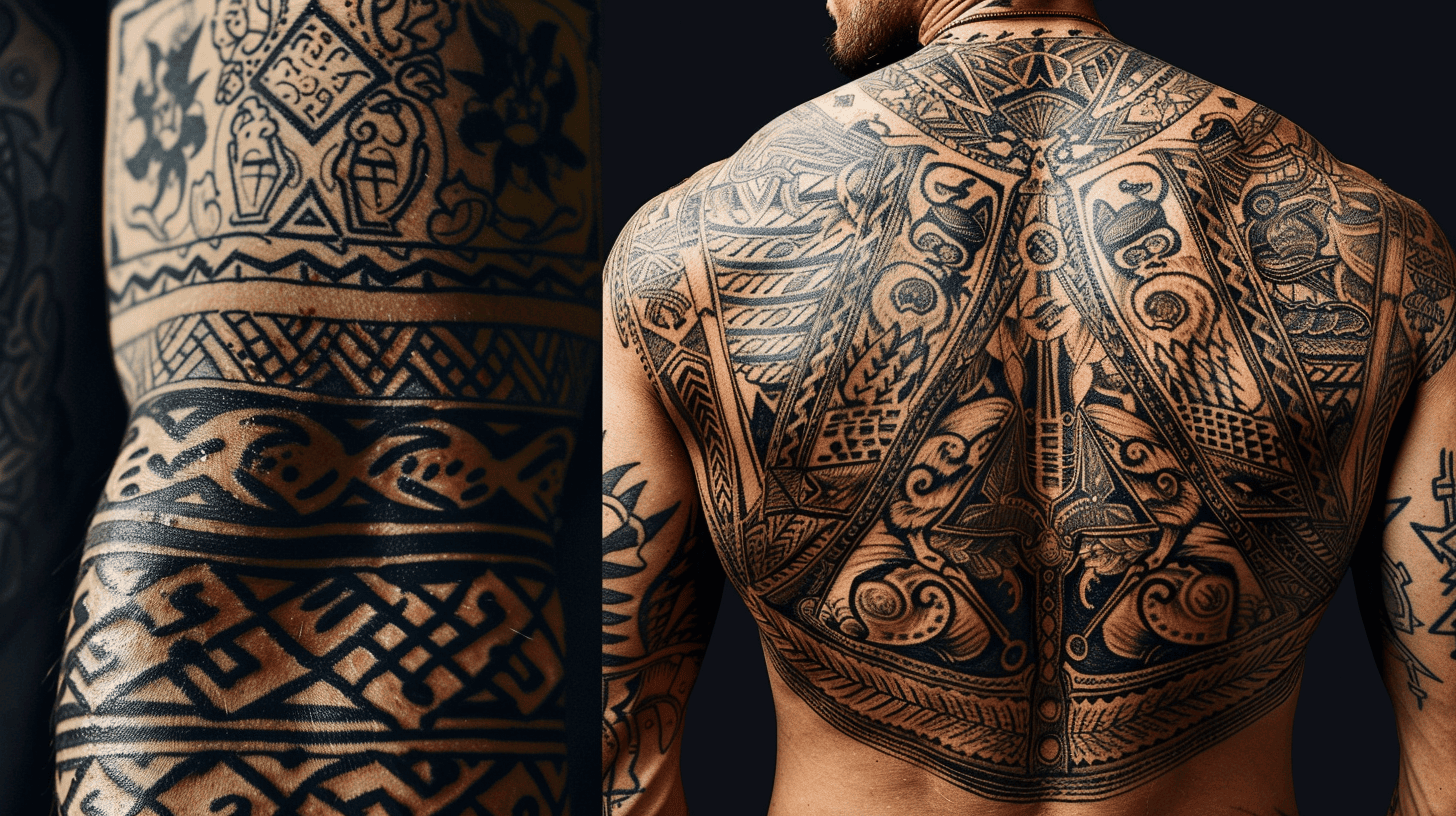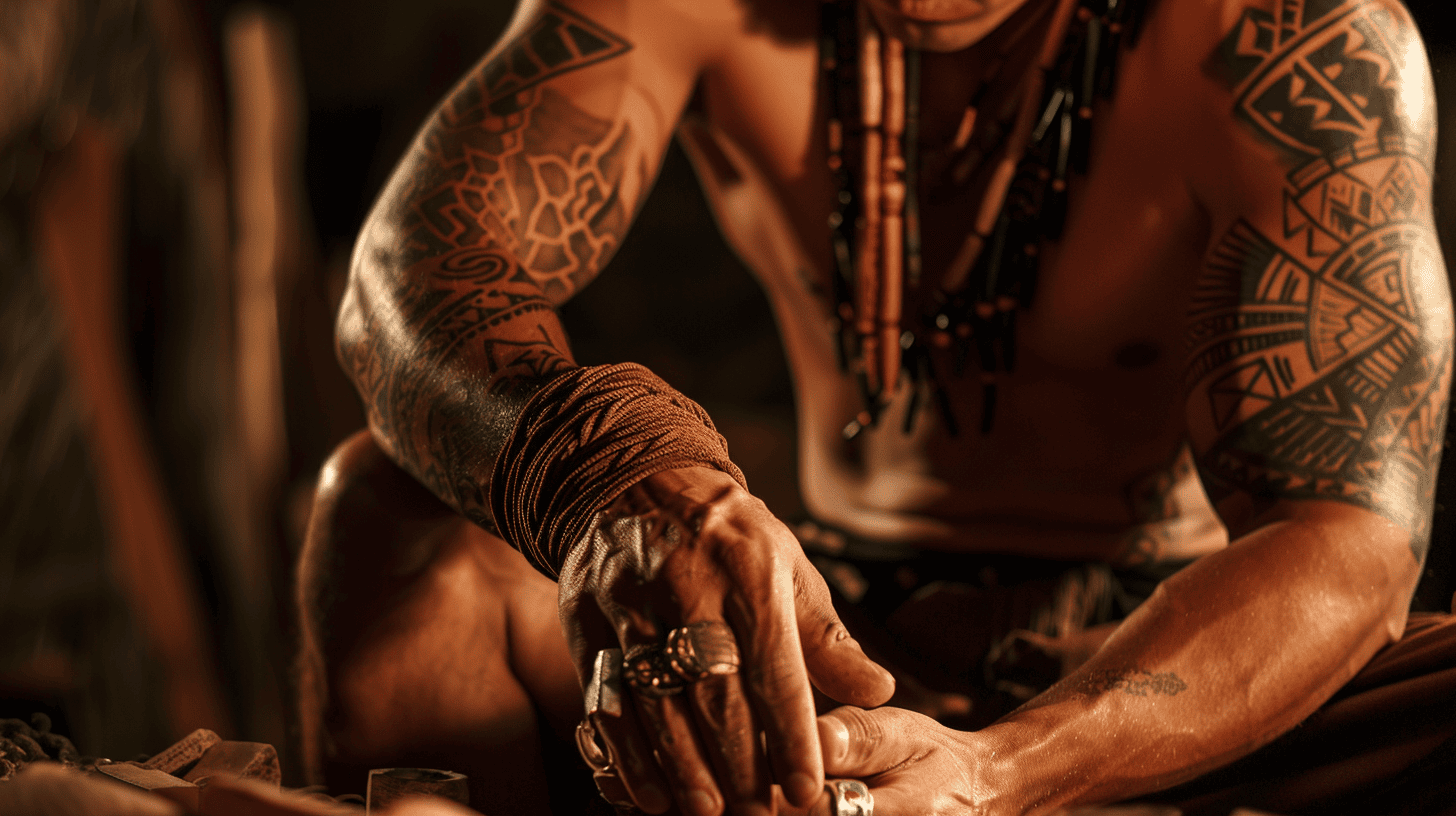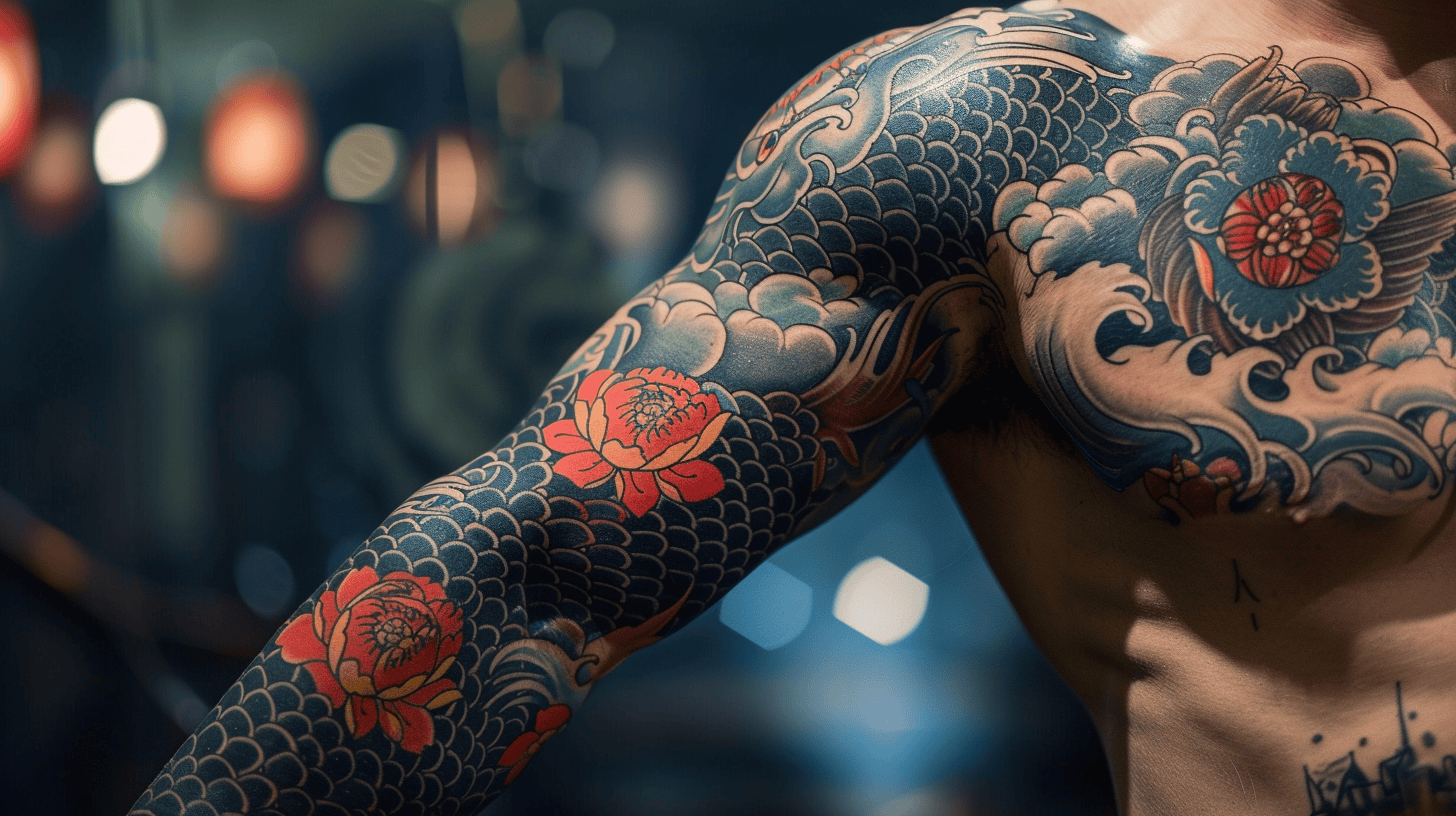Tattoos have been a part of human culture for thousands of years. They are more than just body art; they are a form of self-expression, a rite of passage, and a symbol of identity.
Across the globe, ancient tattoo traditions tell stories of cultural heritage and societal norms. From the intricate tribal tattoos of Polynesia to the traditional ink methods of the Maori, each tattoo carries a unique narrative.
These ancient practices have shaped the modern tattoo industry. They continue to inspire artists and enthusiasts alike, bridging the gap between the past and the present.
In this article, we will journey through time and across continents. We will explore the rich history and cultural significance of ancient tattoo traditions.
Join us as we delve into the world of tribal tattoos, traditional ink, and the enduring legacy of these ancient art forms.

The Cultural Significance of Tattoo Traditions
Tattoos have always been significant in human societies. They are not merely aesthetic adornments but are deeply rooted in the cultural fabric of many communities.
In ancient times, tattoos were often associated with rites of passage, status symbols, or marks of beauty. They were a visual language, communicating personal and societal values, beliefs, and identities.
For instance, in Polynesian cultures, tattoos were a form of social stratification. The complexity and location of the tattoo indicated the wearer's social status and role within the community.
In contrast, the Maori people of New Zealand used tattoos, known as "moko," as a form of identity and lineage. Each moko was unique to the individual, telling the story of their ancestry, tribal affiliations, and personal achievements.
These examples highlight the cultural significance of tattoo traditions. They remind us that tattoos are more than skin deep; they are a reflection of our human desire to express and connect with our cultural roots.
Tattoo Traditions as a Rite of Passage
Tattoos have often served as markers of significant life transitions. In many cultures, they symbolize the passage from childhood to adulthood or the assumption of new social roles.
For example, in Samoan culture, the traditional "tatau" process is a rite of passage for young men. This painful and lengthy procedure signifies their transition into manhood and their readiness to serve their community.
Similarly, the Kalinga tribe in the Philippines uses traditional hand-tapped tattooing techniques to mark milestones. Women who have taken part in headhunting expeditions are awarded specific tattoos, signifying their bravery and strength.
These tattoo traditions underscore the human need to commemorate life's significant moments. They serve as enduring reminders of personal growth, resilience, and the journey of life itself.

Tribal Tattoos and Their Indigenous Roots
Tribal tattoos are deeply rooted in indigenous cultures. They are more than mere body art; they are a form of identity, a symbol of belonging.
In many indigenous societies, tattoos tell a story. They speak of a person's lineage, status, and achievements. They are a visual language, a form of communication that transcends words.
For instance, the intricate patterns of Polynesian tattoos tell tales of the wearer's genealogy, social rank, and personal accomplishments. They are a testament to the wearer's courage, as the traditional tattooing process is both painful and time-consuming.
Tribal tattoos are a testament to the rich cultural heritage of indigenous societies. They are a vibrant reminder of the diversity and depth of human expression.
Polynesian Influence on Modern Tattoo Art
Polynesian tattoo traditions have had a profound influence on modern tattoo art. The intricate patterns and symbols have found their way into contemporary designs.
The resurgence of interest in tribal tattoos has led to a renewed appreciation for Polynesian tattoo art. This has helped to preserve these ancient traditions, ensuring their survival in a rapidly changing world.
The influence of Polynesian tattoo art is a testament to the enduring appeal of these ancient traditions. It is a reminder of the power of art to bridge cultures and transcend time.
The Maori Moko and Its Unique Heritage
The Maori people of New Zealand have a unique tattoo tradition known as "moko". These facial tattoos are a form of identity and status within the Maori community.
Each moko is unique to the wearer, telling the story of their ancestry, tribal affiliations, and personal achievements. The moko is more than a tattoo; it is a visual autobiography, a living testament to the wearer's life and heritage.
The moko tradition is a powerful symbol of Maori culture. It is a testament to the Maori people's resilience and their commitment to preserving their cultural heritage.
Ancient Tattooing Practices Around the World
Tattooing is a practice that spans across cultures and continents. It is a testament to the universal human desire for self-expression and identity.
In ancient Egypt, tattoos were associated with women and goddesses. They were seen as symbols of fertility and protection. The ancient Greeks and Romans also practiced tattooing, using it to mark slaves and criminals.
In Japan, the Ainu people used tattoos to ward off evil spirits. Women were often the ones to receive these protective markings. This practice, however, was suppressed during the Meiji era, when tattoos were associated with criminality.
Despite this, traditional Japanese tattoo art, known as Irezumi, survived. It evolved into a complex art form, rich in symbolism and cultural significance.
In Siberia, the Pazyryk mummies provide the earliest known examples of tattoo art. These tattoos depict animals and mythical creatures, suggesting a belief in the spiritual power of tattoos.
The diversity of ancient tattooing practices is a testament to the richness of human culture. It is a reminder of our shared history, our collective desire to tell our stories on the canvas of our skin.
The Pazyryk Mummies and the Dawn of Tattoo Art
The Pazyryk mummies of Siberia provide the earliest known examples of tattoo art. These tattoos, dating back to the 5th century BC, depict animals and mythical creatures.
The intricate designs suggest a high level of skill and artistry. They also hint at the spiritual beliefs of the Pazyryk people, suggesting a belief in the power of tattoos to protect and empower the wearer.
The Pazyryk mummies are a window into the past, a glimpse into the dawn of tattoo art. They are a testament to the enduring human desire to adorn our bodies with meaningful symbols.
Irezumi: The Art of Japanese Tattooing
Irezumi is the traditional art of Japanese tattooing. It is a practice that dates back to the Yayoi period (300 BC–300 AD), but it was during the Edo period (1603–1868) that Irezumi developed into the intricate art form we know today.
Irezumi tattoos often cover large areas of the body, such as the back or the arms. They feature complex scenes from Japanese mythology and folklore, filled with symbolic meaning.
Irezumi is more than a form of body art. It is a cultural tradition, a form of storytelling that carries the myths and legends of Japan on the skin of its wearers.
The Kalinga Tribe and the Art of Batok
In the Philippines, the Kalinga tribe has preserved the ancient art of Batok, or traditional hand-tapped tattooing. This painful and time-consuming process is a rite of passage, a mark of bravery and endurance.
The designs of Batok tattoos are rich in symbolism, reflecting the wearer's identity and achievements. They are a testament to the wearer's courage, their commitment to their cultural heritage.
The art of Batok is a powerful symbol of Kalinga culture. It is a testament to the resilience of indigenous traditions in the face of modernization and change.

The Revival of Traditional Tattooing Methods
In recent years, there has been a resurgence of interest in traditional tattooing methods. This revival is driven by a desire to reconnect with cultural roots and preserve ancient art forms.
Indigenous cultures around the world are leading this revival. They are reclaiming their tattoo traditions as a form of cultural identity and heritage.
This resurgence is not just about aesthetics. It's about storytelling, about preserving the wisdom and knowledge of the past.
The revival of traditional tattooing methods is a testament to the enduring power of these ancient art forms. It is a celebration of cultural diversity and a tribute to the richness of human creativity.

Symbolism and Meanings Behind Traditional Tattoos
Traditional tattoos are more than just body art. They are rich with symbolism and carry deep meanings.
Each design tells a story, represents a belief, or marks a significant event. They can symbolize strength, courage, or spiritual connection.
Understanding the symbolism behind traditional tattoos enriches our appreciation of this ancient art form. It reminds us that every tattoo is a piece of history, a personal narrative, and a cultural statement.
Preserving Tattoo Traditions: Ethical Considerations and Cultural Heritage
Preserving ancient tattoo traditions is crucial. It's about safeguarding our shared cultural heritage.
However, it's not without ethical considerations. Respect for the origins and meanings of traditional tattoos is paramount.
In the end, the preservation of these traditions is a testament to the resilience of cultures. It's a celebration of our shared human history.
Conclusion: The Future of Ancient Tattoo Traditions
The future of ancient tattoo traditions is promising. A resurgence of interest in these art forms is evident.
This revival is not just about aesthetics. It's about reclaiming cultural identity and heritage.
In conclusion, ancient tattoo traditions continue to evolve. They remain a vibrant part of our global cultural tapestry.
Call to Action: Contact Charles Huurman
If you are inspired by the rich history and cultural significance of traditional tattoo art, or if you want to explore how these ancient practices can be integrated into modern tattooing, don't hesitate to reach out. Charles Huurman is dedicated to preserving and revitalizing these timeless traditions while creating bespoke tattoo masterpieces.
Get in touch with Charles Huurman today to discuss your ideas and embark on a journey that honors the past while embracing the future of tattoo artistry. Your story deserves to be told through the timeless language of traditional tattoos. Contact Charles Huurman now to bring your vision to life
